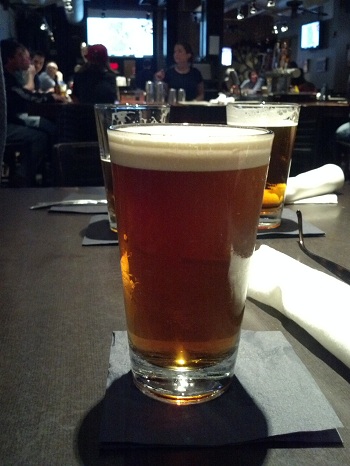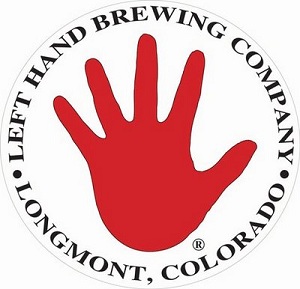The Most Hated Crate in Crash Bandicoot

Brewery and Country of Origin: Left Hand Brewing Company of 1265 Boston Avenue, Longmont, CO, 80501, USA
Date Reviewed: 2-11-13
Dedicated to our dog Shady, who was the best puppy any dog lover could have ever wished for.
Left Hand Brewing of Colorado is known for producing multiple widely distributed versions of their best selling beers. Last year, we tried both their standard bottled Milk Stout, and their Milk Stout Nitro. Of course, they don't really mean that if you drop a bottle of it on the floor, it'll violently explode. Today's lesson is brought to you by the letter N. As you would imagine from the two names, the difference between the two is of course, the use of Nitrogen (N), a primarily gaseous element with an atomic weight of 7. This is used as an alternative to more traditional Carbon Dioxide (CO2), which is also used to carbonate soda and candies & baked goods. Plants also use CO2 to build themselves and respirate, but you're not here to learn any of that. The purpose of using Nitrogen rather than CO2 is all in the beer's foam head. All beers will have a foam head when poured. Some are only a few millimeters tall with a very weak retention and low density, and some can be over an inch and a half tall (depending on the glass), with a thick, creamy texture, a high density, and a solid retention. All of this depends on four things: the pour (how the bartender, server, or consumer pours the beer into the glass), the strain of yeast used, the glass the beer is served in, and the use of either Nitrogen or Carbon Dioxide. Both of these are good in their own right, but certain styles of beer will demand one, the other, or a combination of both. Traditionally, most beers were pressurized with Carbon Dioxide which was produced as a by product of fermentation unless distributed in nitro specific kegs. But you couldn't drink a "draught" like served beer from a can or bottle until 1964, when Guinness started injecting liquid nitrogen into bottles and cans before sealing. But this method was only distributed across Ireland as opening the can required a special "initiator" device which looked like a syringe and was rather complicated for consumers to deal with. The product was launched in 1979. Another method came from Guinness with the invention of the "widget." In the context of brewing, and packaging, a widget is a hollow device used to capture unwanted dissolved gas in a bottled or canned beer. the idea is that if liquid nitrogen is added to a beer prior to the container being sealed, it will expand, forcing other gasses, like naturally occuring CO2 and chemically harmful oxygen (O2) to be forced into the widget, usually similar to a table tennis ball with a very small hole in it. Speaking of nitro and explosives, the original project codename was "Project Dynamite," which wasn't received well with customs. This forced Guinness to rename the project Oaktree, an homage to the original idea's can system project named ACORN (Advanced Cans Of Rich Nectar). Cans of Guinness Draught with a widget at the bottom of the can were nationally launched in March 1989. Unfortunately, if the beer wasn't kept at an ideally cold temperature, they would rapidly overflow when opened. In 1997, a floating widget called the "Smoothifier" replaced the plastic disc in the previous version, and ameliorated this problem. Today, the floating widget is used in Guinness' Draught cans and bottles (though the bottles' widgets are shaped like bullets called "rockets") and sold around the world. Other breweries in Ireland and The UK quickly began using the concept of the widget and nitro filled beer for their maltier ales and stouts. Many breweries in The United States are adopting the practice as well. Because Nitrogen fed bubbles are smaller than CO2 bubbles, the density of the foam head rises, delivering a creamy, smooth texture which is desirable in malty beers, including Left Hand's Milk Stout and Sawtooth Ale.
Date Sampled: 1-19-13 At: Joshua Tree Somerville, 256 Elm Street, Somerville, MA, 02144, USA
Beer Style: Extra Special Bitter
Alcohol by Volume: 5.30%
Serving Type: Nitro Keg, 20 oz Tumbler Glass
Rating: 3.22
 Sawtooth Ale Nitro
Sawtooth Ale Nitro




